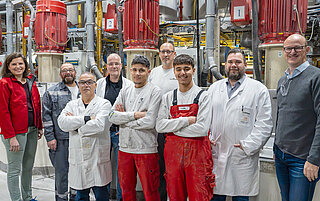Since 1 January 2024, we have no longer produced or sold nitrocellulose lacquers or solvent-based, acid-curing lacquers. This represents an important milestone on the way to our Vision 2030.
A brief background:
After researching the facts for a long time and exploring all the options, an employee from the "Sustainability" strategy group asked the management the decisive question at the turn of the year 2021/2022:
"How much longer do you want to wait? We can all set the course for the future now and take responsibility for future generations."
The idea was to simply stop selling solvent-based lacquers in the future.
This was followed by a brief pause, then a lively exchange, until finally the Hesse family, together with the top management and strategy group, made a decision:
"Yes, we are going down this path: in future, Hesse Lignal will completely dispense with solvent-based products! Our entire product portfolio is to be geared towards sustainable alternatives."
